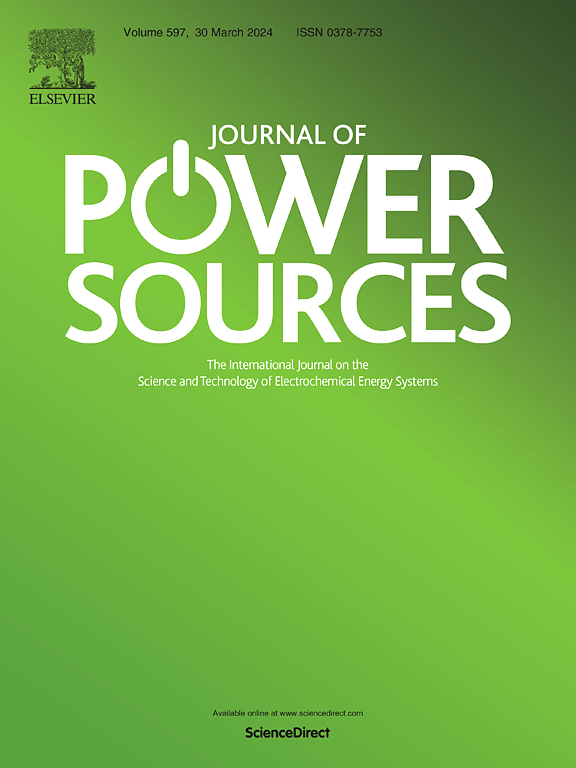Water distribution and transmission within perforated gas diffusion layer and layered gas diffusion layer of a proton exchange membrane fuel cell
IF 8.1
2区 工程技术
Q1 CHEMISTRY, PHYSICAL
引用次数: 0
Abstract
Effective water management within the gas diffusion layer (GDL) is especially critical to the performance of the proton exchange membrane fuel cell (PEMFC). Various parameters, including operation time, driving voltage, porosity, and structure features, collectively govern water saturation distribution within the PEMFC. Through experimentally validated numerical simulations (with a maximum error of 4.7 % against experimental data), this study examines the effects of different porosity and contact angle distributions of GDL, as well as the addition of a microporous layer (MPL) and perforation, on the water drainage efficiency of a fuel cell under various operating conditions. The findings indicated that GDL's water removal capacity improved as the contact angle and porosity increased. Arranging the porosity in a positive manner or the contact angle in a negative manner effectively enhanced the GDL's water removal capability. A higher difference in porosity between MPL and GDL, with MPL having a lower porosity and a lower thickness ratio, resulted in better water transport performance for the GDL. The GDL utilizes a through-hole structure as a drainage channel for efficient water transport, and a smaller through-hole diameter leads to improved drainage effectiveness.
求助全文
约1分钟内获得全文
求助全文
来源期刊

Journal of Power Sources
工程技术-电化学
CiteScore
16.40
自引率
6.50%
发文量
1249
审稿时长
36 days
期刊介绍:
The Journal of Power Sources is a publication catering to researchers and technologists interested in various aspects of the science, technology, and applications of electrochemical power sources. It covers original research and reviews on primary and secondary batteries, fuel cells, supercapacitors, and photo-electrochemical cells.
Topics considered include the research, development and applications of nanomaterials and novel componentry for these devices. Examples of applications of these electrochemical power sources include:
• Portable electronics
• Electric and Hybrid Electric Vehicles
• Uninterruptible Power Supply (UPS) systems
• Storage of renewable energy
• Satellites and deep space probes
• Boats and ships, drones and aircrafts
• Wearable energy storage systems
 求助内容:
求助内容: 应助结果提醒方式:
应助结果提醒方式:


